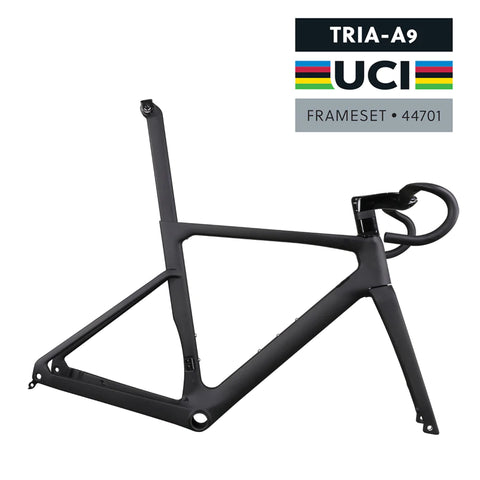Whether you're an avid cyclist looking to improve your time trials or just want to increase your speed for recreational rides, there are several techniques you can employ to get faster on your bike. With the proper training methods and techniques, you'll be zipping down the road in no time.
Bend Your Elbows And Tuck Them In.
There are various ways you might grow faster on your bike, whether your riding is recreational and you merely want to boost your speed or you're a competitive cyclist trying to improve your time trials. Using the correct training strategies and approaches can help you to be zooming down the road in no time.
Wind resistance is the main thing slowing down a cyclist. Still, there are various strategies you can use to cut your frontal area and drag, facilitating your cycling across the wind. Changing your body posture on the bike is the most basic advice. Try bending and tucking your elbows closer to the bars instead of sitting up straight on the saddle and catching a lot of wind. You will see differences right away.

Switch Up Your Cadence.
Don't forget to turn the pedals 80–100 times every minute. Change the gear on your bike to enable comfortable completion of 80–100 full revolutions per minute. This will increase your bike's speed and efficiency and help your leg muscles endure longer.
Change to easier gear when you come to an uphill part. This will help you to keep the same pedaling cadence while lowering the pedal resistance.
For tracking your cadence, think about installing an RPM monitor on your bike. This will enable you to keep inside the 80–100 range and monitor the precise number of rotations you are completing per minute.
Ride In A Group
One efficient approach to raising your average speed is riding with other cyclists. Riding with others increases your chances of keeping the pace even in cases of tiredness. Furthermore, if you feel strong, you can guide the group and enable everyone to leave faster.
Riding in a group has a very important advantage in terms of drafting effect. Riding behind other bikers helps you to save up to forty percent of the work required to ride at the front. Good and safe drafting calls for experience; the more you bike, the more proficient you become.

Tubeless Tire
One kind of bicycle tire devoid of inner tubes are tubeless tires. Rather, they seal tightly straight to the rim of the wheel. This lessens rolling resistance and friction, as well as the need for a tube. Tubeless tires therefore often run faster and more efficiently than conventional tubed tires.
Tubeless tires also usually weigh less than tubed tires, as they don't call for the additional weight of an inner tube. Tubeless tires are popular among cyclists who prioritize speed, efficiency, and durability since they eliminate the need for a tube, therefore lowering the chance of pinch flats and punctures.
Aero Handlebars
Your energy consumption will vary greatly depending on whether you move from round handlebars to aero handlebars with a flat top. When riding at 40 km/h in wind tunnel studies, aero handlebars have been found to save between 4 and 6 watts when compared to conventional round handlebars. This implies that aero handlebars would enable you to cycle with less effort and more efficiency.
Carbon Frame
Though some of you may find me insane for stating this, the truth is some bike frames are faster than others. Spending much time in the wind tunnel, manufacturers create more aerodynamically efficient bike frames. Third-party tests have frequently proven that frames with an aeroform can save you over 10 watts over those with spherical tubes. Investing in a more aerodynamic frame will pay off over time, as bike frames have stayed essentially unaltered since 2020.
Carbon Wheels
Your riding speed will be much improved by switching to a lighter, deeper rim variation. By up to 1 kg, carbon wheels are lighter than aluminum ones, therefore lowering the bike's total weight. This clearly affects general sensation as well as climbing performance. Riding uphill becomes simpler and less taxing, thereby saving your energy for longer trips.
Moreover, deeper rims of wheels are meant to be aerodynamic, thereby reducing air resistance during high-speed cycling. This lets you keep your pace with minimal work required.
Maintenance
For optimal performance, keep your bike's tires properly inflated, lubricate the cables and chains, and clean the drivetrain components regularly to prevent power loss. Additionally, ensure straight brake and derailleur adjustment and consider a bike fit.

Wear A Skinsuit
Did you realize that your body is responsible for more than seventy percent of the resistance you encounter riding? This is why it's so important to ride daily in correctly fitting and fitted jerseys. More than any other improvements you may think about, proper clothing is essential.
Regarding racing, skinsuits are something to give thought to. Comprising one piece of skin-tight clothing encompassing the body from the neck to the thighs or knees, a skinsuit is Originally employed in road races, they are now rather frequent in time trials and track events. The watt savings during a race are notable, even if they could be too much for daily rides. For this reason, every professional squad on the Grand Tour sportskins.

Wear Aero Helmet
Usually when talking about aerodynamic helmets, people speak to two varieties. Usually employed in time trials, this kind is usually coupled with time trial bikes. Road riding makes advantage of the second kind. Though it is not as aerodynamic as the TT helmets, it provides better ventilation to cool your head over extended rides.
More than 10 watts can be saved by these aerodynamic road helmets than by standard-shaped or lightweight road bike helmets.




